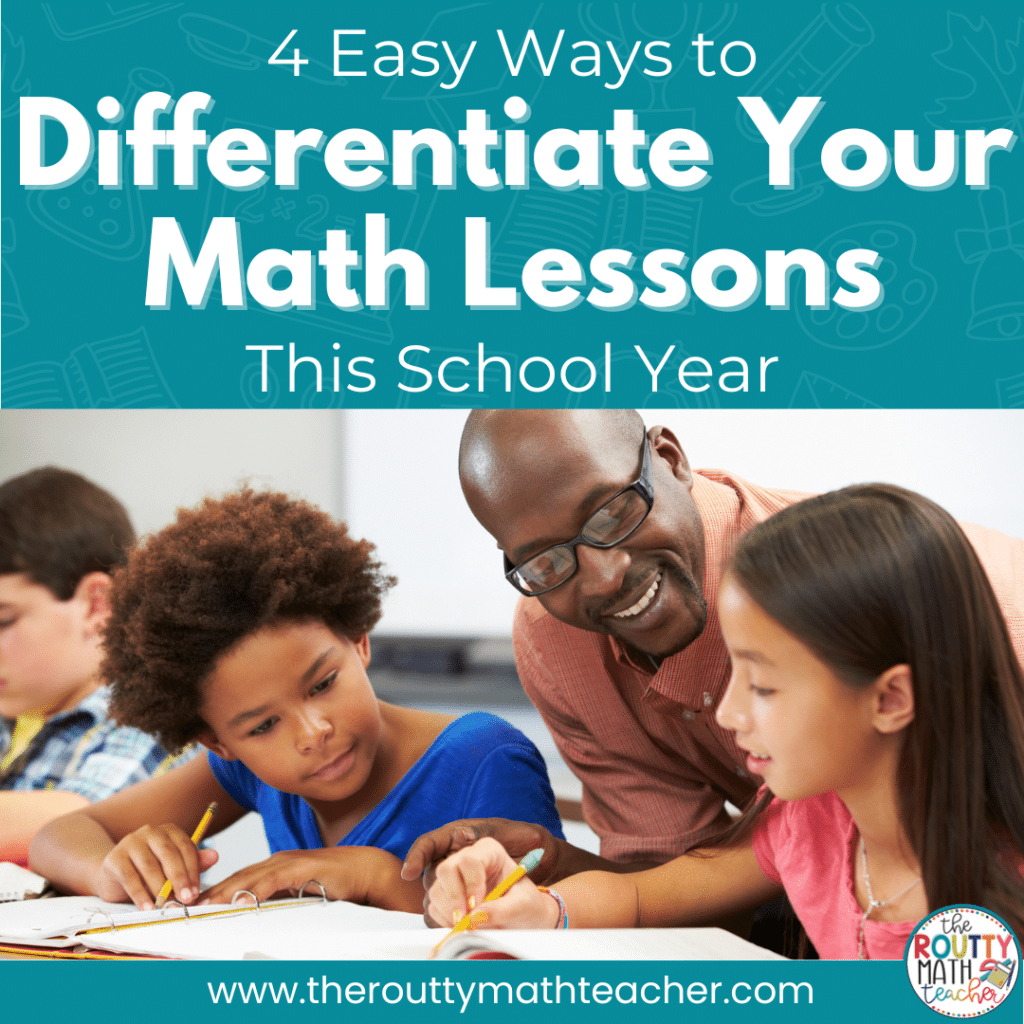As educators, we understand each student learns in a unique way. While it may be challenging to meet the diverse needs of all students, differentiation for math is a powerful approach that can foster academic growth and engagement. In this article, we will explore what it means to differentiate learning and I offer four simple strategies, including the integration of math games, to differentiate instruction in your upper elementary math classroom.
Inside a brightly decorated classroom, Mrs. Ramirez stood at the center.
As she scanned the room, Mrs. Ramirez observed a dynamic assortment of personalities, each student a unique thread in the fabric of her classroom.
There were the spirited extroverts who seemed to have boundless energy, craving hands-on activities and lively discussions.
On the other side of the spectrum, the introverts sat quietly, their minds teeming with thoughts yet struggling to find their voices.
There were the students who excelled in mathematics, thirsting for complex problem-solving, while others longed for visual aids or auditory cues.
And then there were the students with exceptional talents and potential, their brains ready to be ignited, waiting for the right challenge that would elevate their learning.
In her quest to differentiate, even after 15 years of teaching, Mrs. Ramirez felt like a tightrope walker, delicately balancing her attention between the gifted, the struggling, the introverts, and the extroverts.
The Challenges of Differentiation
Every student possesses unique strengths, weaknesses, and learning styles. As educators, we understand each student learns in their own way.
By differentiating instruction, teachers can unleash the full potential of their students, ensuring a brighter future and empowering them to excel in their mathematical journey.
But, differentiating for every student is challenging and time-consuming. Even seasoned teachers, like Mrs. Ramirez, can find themselves stretched thin. The sheer volume of individualized learning plans, materials, and activities requires an immense amount of time and effort.
In this blog post, we will explore what it means to differentiate learning and I will share four simple strategies, including the integration of math games, to differentiate instruction in your upper elementary math classroom.
What is Differentiated Learning?
Differentiation for math is an instructional approach that recognizes and caters to the diverse learning needs, abilities, and interests of students.
It involves tailoring teaching methods, resources, and assessments to meet individual student’s unique requirements, ensuring every learner can access and comprehend the curriculum.
By personalizing instruction, educators can help students develop their strengths, address their weaknesses, and engage in meaningful and relevant learning experiences.
Differentiation for Math: Four Ways to Individualize Instruction
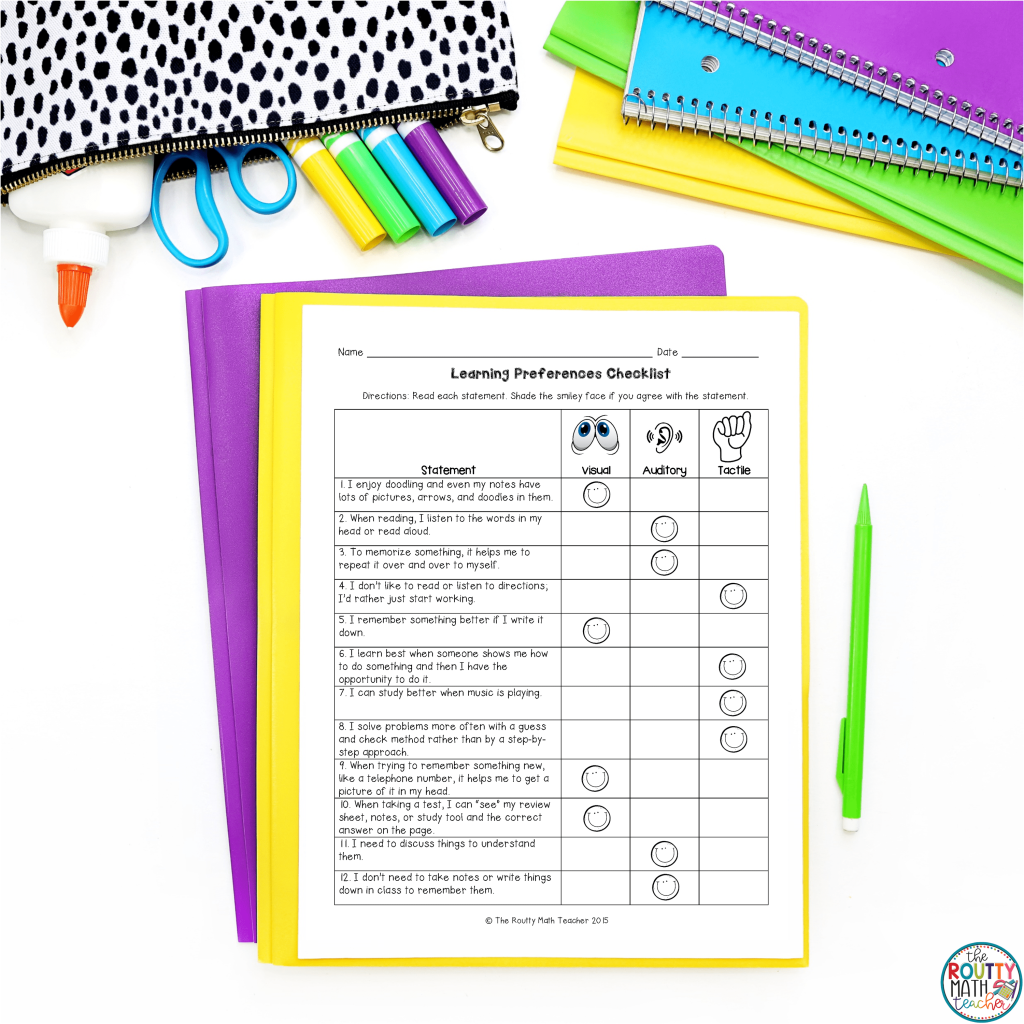
Learning Styles:
To differentiate instruction based on students’ learning styles, we consider their preferred learning modalities: tactile, auditory, and visual. By catering to students’ individual learning styles, you can maximize their engagement and comprehension of mathematical concepts and skills.
Here are some ways to differentiate for each learning style:
- For tactile learners, provide hands-on activities and manipulatives that allow them to physically interact with mathematical concepts. Utilize items such as counting blocks, geometric shapes, or fraction tiles to engage their sense of touch and enhance understanding.
- For auditory learners, incorporate verbal explanations and discussions. Consider incorporating audio recordings or partner/group discussions to provide opportunities for them to listen, process, and discuss mathematical ideas.
- Visual learners benefit from visual aids such as charts, diagrams, and graphic organizers. Use visual representations, such as models, number lines, or diagrams, to present information in a way that appeals to their visual processing strengths. Additionally, you can incorporate visual cues in instructions, worksheets, and presentations to reinforce concepts visually.
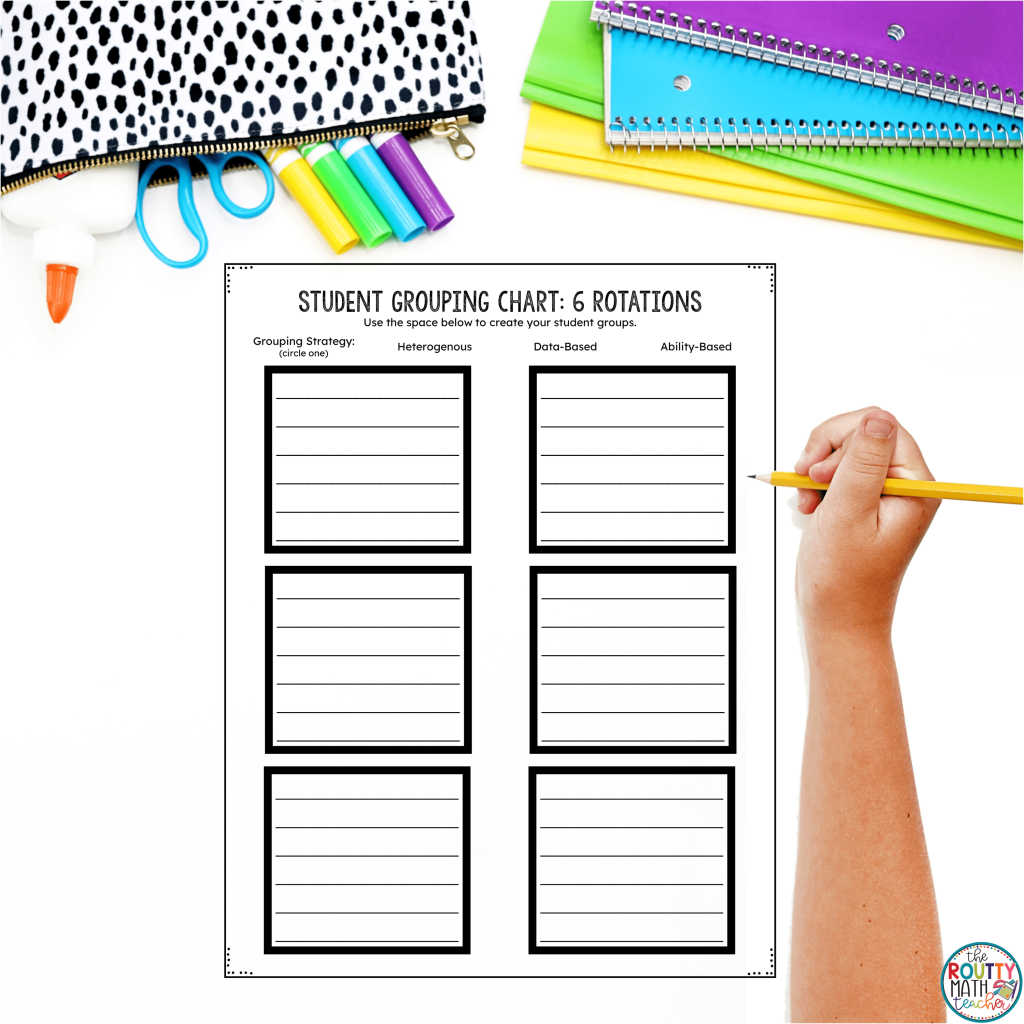
Flexible Grouping:
By forming groups based on students’ needs, interests, or readiness levels, you can provide targeted support and instruction to address individual learning goals.
For instance, you may create mixed-ability groups for collaborative problem solving tasks or small homogeneous groups for targeted skill-building exercises. This approach allows students to work at their own pace, receive tailored guidance, and benefit from the diverse perspectives of their peers.
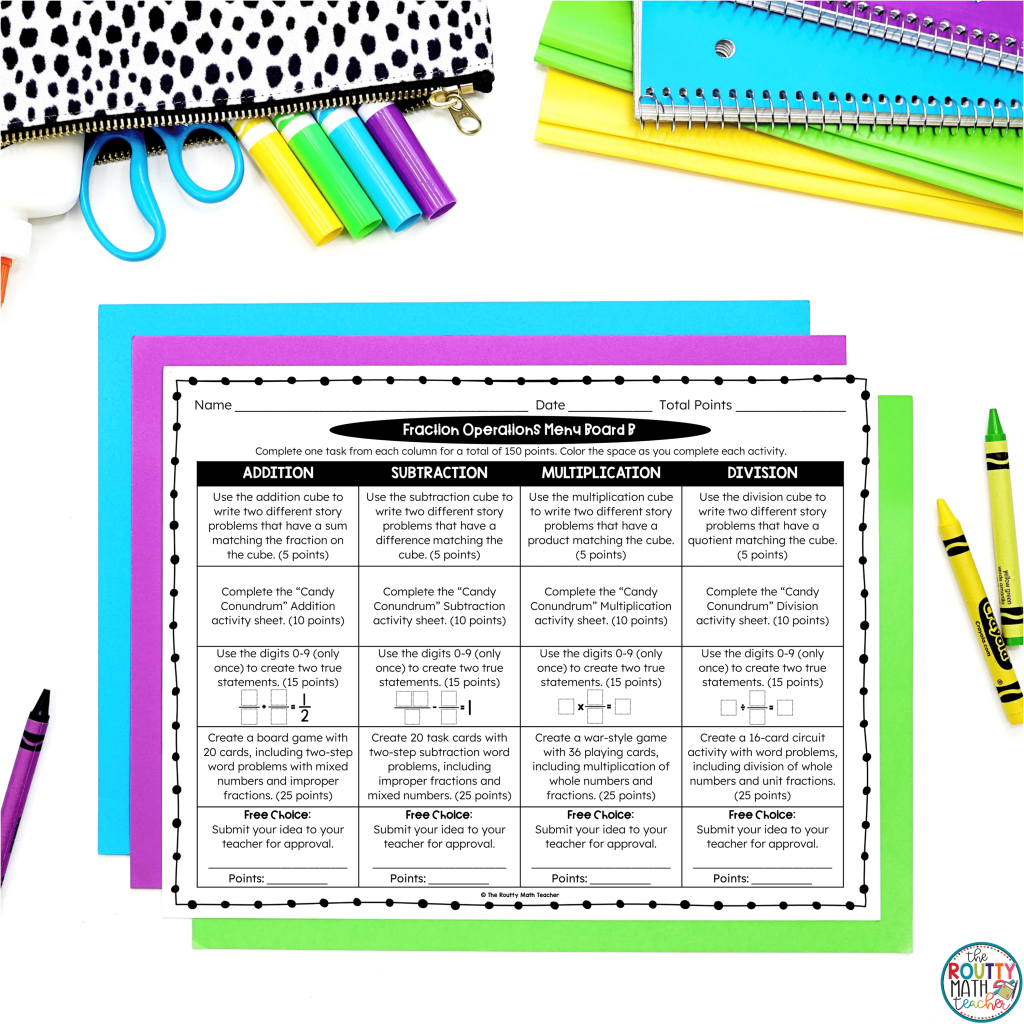
Tiered Assignments:
Tiered assignments are a powerful differentiation strategy allowing students to work on tasks of varying levels of complexity, depth, or sophistication. Designing assignments that target the same mathematical concept but offer different levels of challenge, ensures each student is appropriately challenged based on their readiness.
For example, you could create three tiers of assignments: basic, intermediate, and advanced. Students can self-select or be assigned to the tier that matches their current level of understanding and skills. This approach ensures all students engage with the core concept while providing opportunities for extension and enrichment for those who are ready for more advanced work.
Math menus are a great way to create tiered assignments. The nature of a math menu automatically creates opportunities for students to select tasks that match their ability level; however, a more structured approach would be to create multiple menus with the same tasks but vary the points. For example, a simple practice worksheet may be worth 10 points on the higher-level menu and 30 points on the lower-level menu. This method still gives students the flexibility to choose their path but evens the playing field a bit when it comes to the effort-point value ratio.
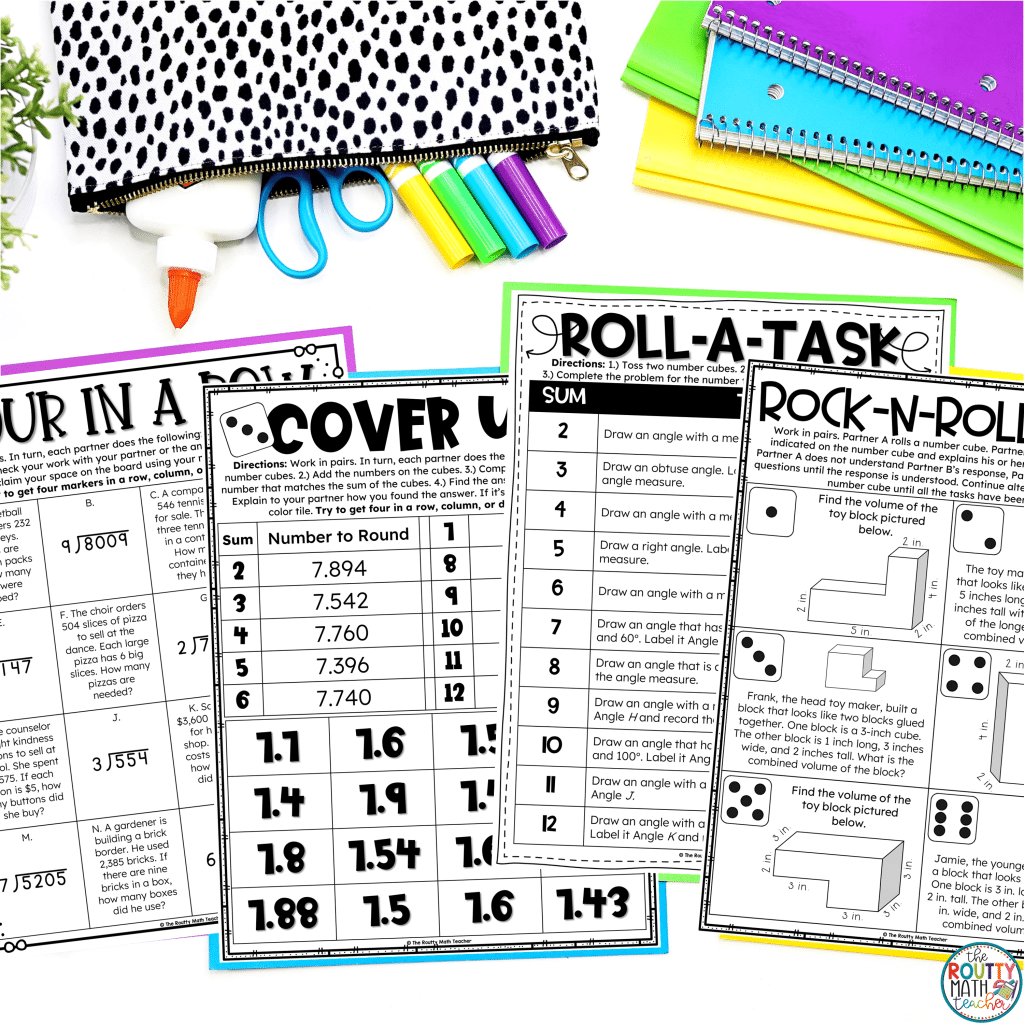
Math Games:
Incorporating math games into the classroom is an excellent way to differentiate instruction while making learning enjoyable. Games can be adapted to suit various skill levels, allowing students to practice and reinforce mathematical concepts at their own pace. Consider using board games, digital games, or even physical activities that promote collaboration, problem-solving, and critical thinking. By offering a range of difficulty levels or modifying rules to accommodate diverse abilities, you can ensure all students are appropriately challenged and motivated to learn.
Here are some examples of ways to differentiate for math using math games:
- A game can have different sets of cards or game boards with varying degrees of difficulty based on the levels of mastery or student readiness.
- Convert short answer or open-ended problems into multiple choice questions or offer hints for struggling students while maintaining the original rules for others.
- Math games can be designed to include cooperative and competitive elements, allowing for differentiation based on students’ preferences and social dynamics. For example, students can choose to work together as a team to complete a game or play against each other.
- Provide extension tasks or open-ended challenges that allow students to apply the skills and knowledge acquired during the game in a different context, enabling deeper understanding and catering to the diverse levels of mastery within the classroom.
Looking for More Strategies?
In most classrooms, our highest achieving students receive the smallest amount of differentiation for math; however, they need differentiated learning opportunities as much, if not more so, than everyone else to provide them an optimal learning experience that meets them where they are and helps them grow.
Click here to discover effective strategies and resources to engage and challenge your gifted students that foster their mathematical talents while meeting their unique learning needs; it’s an essential guide for cultivating brilliance in your classroom!
A Final Word About Differentiation for Math
Differentiation is not a luxury; it is a necessity.
The challenges Ms. Ramirez faced were not mere obstacles but stepping stones on the path toward unlocking the brilliance within each student.
Differentiating learning in the upper elementary math classroom empowers students to reach their full potential, fostering a love for math and a deeper understanding of mathematical concepts.
By incorporating strategies such as math games, flexible grouping, varied instructional materials, and individualized assignments and assessments, you can create a dynamic learning environment that accommodates the diverse needs of your students.
Remember, differentiation for math is not a one-size-fits-all approach but rather a commitment to valuing and addressing the unique qualities of each learner. Embrace this approach, and you will witness the growth and success of every student in your classroom.
Ready to Get Started
If you’re ready to start using math games as differentiation for math, check out my editable math games and activities!
And, be sure to read the next post in my cooperative math games series where I discuss how competitive math games can impact student learning, explain why cooperative games are a better option, and share examples of cooperative partner games that can be used during math stations.
Sound Off!
What differentiation for math strategies do you use in your classroom?

